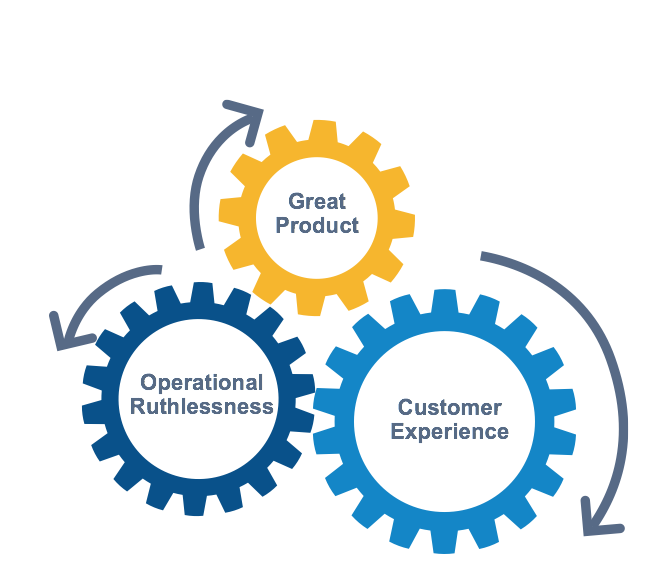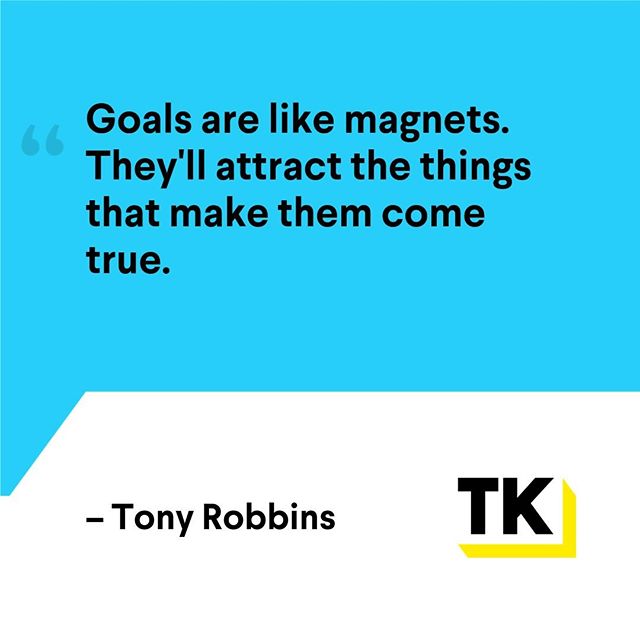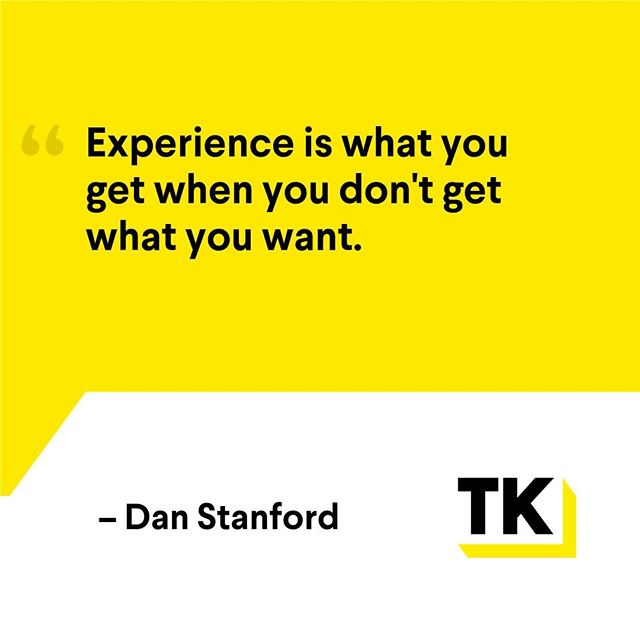I never considered myself to be a competitive person. As I’ve built out ToutApp over the past five years, not only have I realized that I’m an incredibly competitive person, I actually thrive on the pressure it brings.
It moves me, motivates me, pushes me to my peak performance.
Almost to a point where when someone says to me “Wow, this is a crowded market…” My answer almost always is “I know! Isn’t it great?!”
I truly believe anything worth pursuing with a pot of gold in the end and enlightenment along the journey will be competitive, so I’ve made it a point to study it, develop principles around it, and strive to get good at it.
So over the years of building ToutApp, I’ve come to develop a framework on how to think about, embrace, and thrive on competition. Here are my core principles around it.
Principle #1 – Recognize the 3Â different kind of competitors
1)Â The competitors that don’t see you coming
This is the 800lbs gorilla that looks at you and thinks “oh, that’s cute.”
In order to thrive as a business, you always need to have a competitor or two that you have your long term sights on that you want to become, displace, and conquer, even though they think you’re a toy.
2)Â Your direct competitors
Then there are your direct competitors.
They’re across from you at your trade show booth. They’re the ones flirting with your biggest customers. They’re the ones that are following your every move and you know for sure that they’re gunning for you.
At any given time, if you’re doing something significant, you’ll have one to three of these direct competitors.
Your job is to know everything about them, their strengths, their weaknesses, and you have to know what you’re doing in the short term to kick their ass ”” hard.
The biggest thing I’ve learned in my years of competing is that very rarely does this come down to features, functionality, but it has way more to do with the PEOPLE that run the business.
Know the people. Know the CEO’s strengths, weaknesses, know the executive team, and know how to beat the people that run the business.
If you can trump them psychologically, then beating the business becomes an afterthought.
3)Â Your cute competitors
More often than once, a competitor I thought was a joke, a cute toy, and a small team that couldn’t possibly do anything, grew to be a formidable direct competitor.
So, don’t make the same mistake that the 800lbs gorilla makes and don’t underestimate the small guys.
The key to these guys is to take as much air out of their sails as possible. Don’t cede a smaller part of your market to them, don’t let them “take” the shitty customers, don’t discount them.
Take them out when they’re young, so they can’t grow big to become a direct competitor.
If the 800lbs gorilla knew this, then startups wouldn’t exist. Period.
Principle #2 – Always manage your competitive mindset
When you don’t have a plan around competitors, competition can get into your head and paralyze you.
It can stop you from innovating on your business because it’ll make you feel like “What’s the point? they’re just going to copy my brilliant ideas.”
Stop.
Sit down and draw out a map of your three layers of competition. Make notes about who you want to become and how you’re going to disrupt them.
Make notes about the weaknesses and strengths about your directs.
Make notes about how you’re going to build a moat and stop the little upstarts from coming after you. Protect and treat your customers so they never leave.
Principle #3 - Apply what you’ve learned to your overall business strategy but don’t make competing the sole thing that drives you
Customers, investors, employees, and recruits always ask me — “How will you beat the competition?”
Ironically, while having a strategy around your competition is important, obsessing around it should be  just a component of your overall strategy. Otherwise you just become a boring fast follower in the market.
I believe there are three things you have to do to win in a market:
- You have to have a better product. Sure you may fall behind on a feature here and there, and sometimes it’s actually better to let competitors run ahead and build and figure out a feature or two, but on a long enough timeline, you just have to solve the customer problems better.
- You have to be easy to do business with. With attention spans at Snapchat levels for buyers, it has to be dead simple easy to do business with you. Credit Card payments? Sure. Security Reviews? Yep, Here’s a 100 page document. Talk to Sales, absolutely, we have a five minute SLA on requests.
- You have to be a better run business. I wrote a whole post about Operational Ruthlessness. Having the above three are table stakes, but if you can figure out how to just be a better run business with your metrics in line and a smooth flow across all your teams, man, you’re golden. How do you have a better run business — have great people. Whether you’re evaluating the competition, or upping your own game — it all comes down to having the best people with the right experience, the right level of hunger, and some serious heart.
Simple right? Well the key here is that doing one or two of these is hard, doing all three in a great way is even harder and sometimes impossible.
But, I look at these as three asymptotic goals that we have to relentlessly pursue to win in a market. And remember, any market worth winning will be competitive to begin with.
How to ultimately beat your competition
It’s easy to fall into the trap of just doing what you’re competitors are doing. As you go from “not thinking about competitors” to “thinking deeply about your competitors” ”” you have to push yourself to think beyond competition.
I call this having a “differentiated competitive strategy.”
It’s one thing to do as well as your competitors and stay on top of them. You can do this but this won’t ensure you winning in the long run.
What you need to do is put yourself in an aggressive innovation cycle where you constantly trump your competitors in a differentiated way and you keep moving your business forward beyond what they’re doing.
This manifests itself in two ways:
- As you constantly assess strengths and weaknesses, you’ll constantly be doing things to address your own weaknesses and advance your strengths. Doing this will put you “at par” with your competition so that whether a customer goes to you vs. them becomes a 50/50 split ”” this is a good start.
- You then need to rise above and figure out for every thing you do, how do you do it in a differentiated way, how do you do it in a 10x way, how you do it in your OWN UNIQUE way that puts you at a cut above than the rest of them.
#2 is what forces you to take a long view and gets you out of the trap of being “good enough to win 50% of the time against the competition.”
In Conclusion
In order to build a long term sustainable business that is worth something, you have to embrace competitiveness.
You have to address weaknesses in your own business and build your strengths in a differentiated way where you do it in style and in a unique way that is a cut above the rest.
And you do this while keeping a close eye on what the other guys are doing.
As you wage competitive battles, there will undoubtedly be uncomfortable moments where one guy is slightly ahead in one small space but has a lot of negative impacts.
It’s important to stay calm, plan, and executive like crazy.
I’ve found teams with A-players rise up to defeat threats and do so by pursuing greatness in their own product.
While you do this, your sights should be constantly locked onto the 800lbs gorilla that is downright impossible to disrupt today but over a five year period, you know you’ll dominate.
Once you get your mindset straight to adapt to this competitive and innovation discipline, you’ll win. Guaranteed.
Special Thanks / Credits
- Tania Rahman, for inspiring me to write this post. She recently quit her job in Sales to start her own restaurant













